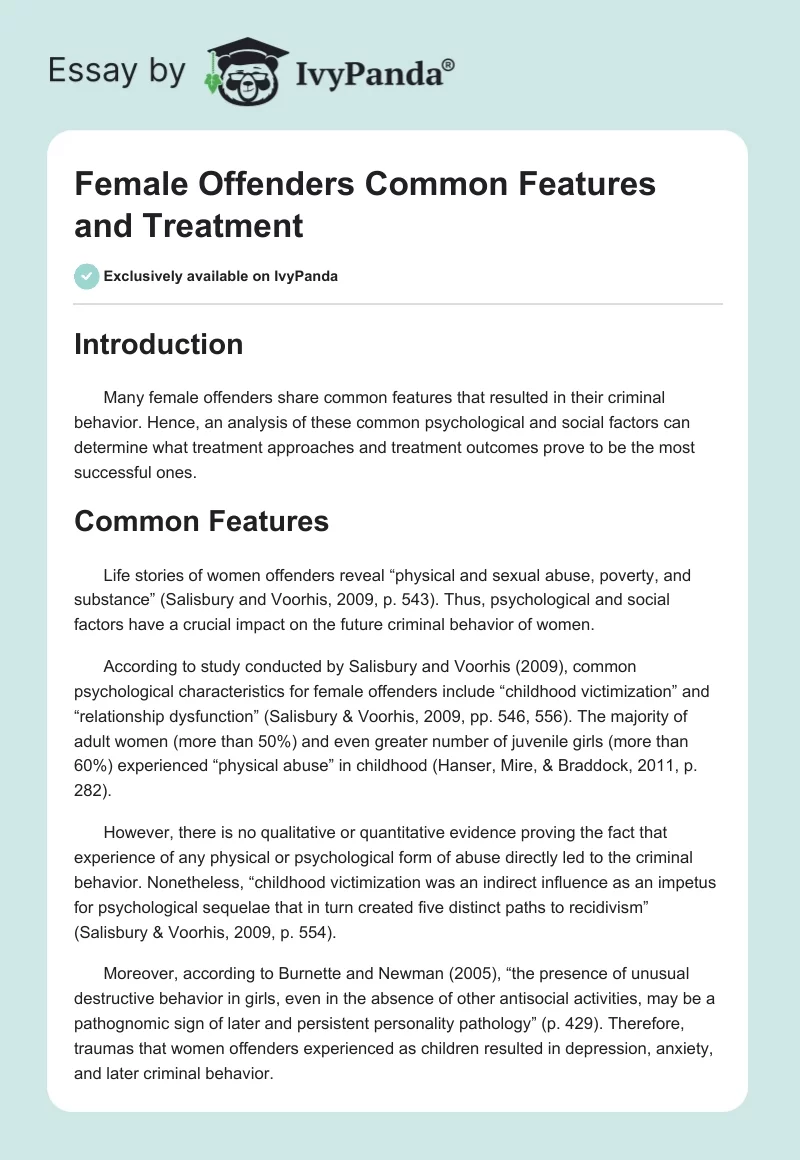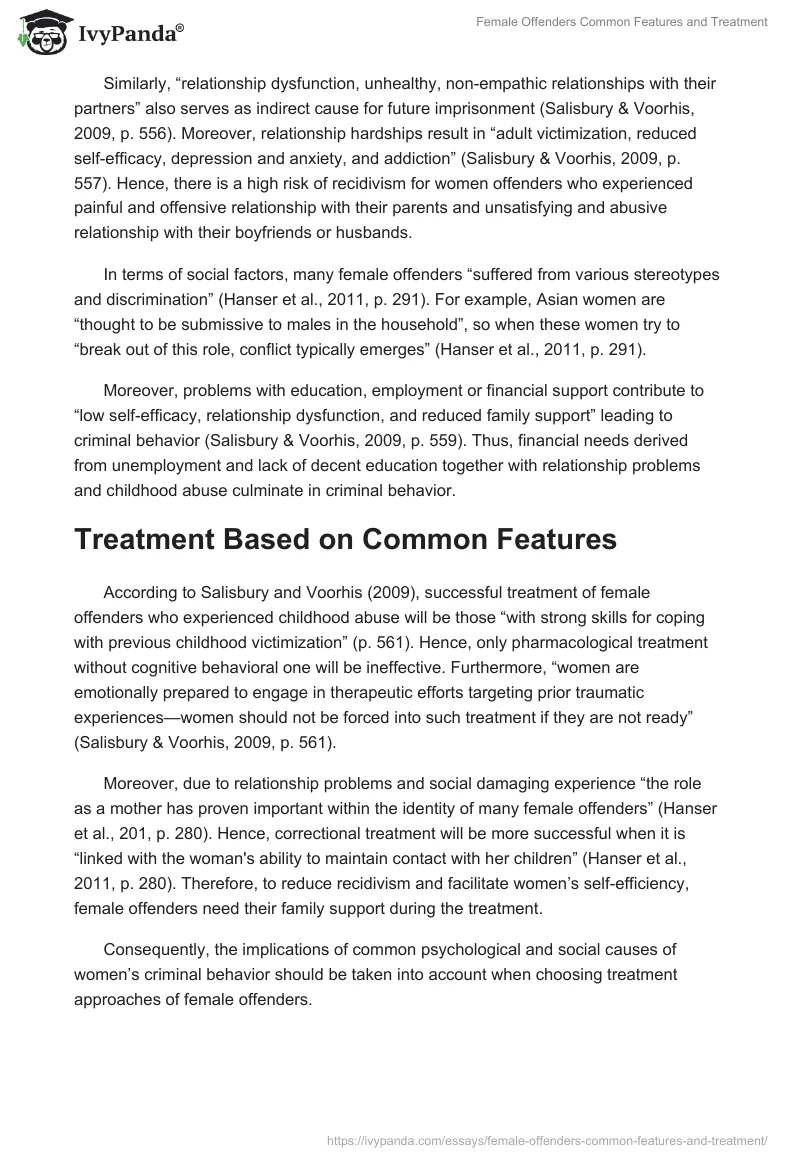Introduction
Many female offenders share common features that resulted in their criminal behavior. Hence, an analysis of these common psychological and social factors can determine what treatment approaches and treatment outcomes prove to be the most successful ones.
Common Features
Life stories of women offenders reveal “physical and sexual abuse, poverty, and substance” (Salisbury and Voorhis, 2009, p. 543). Thus, psychological and social factors have a crucial impact on the future criminal behavior of women.
According to study conducted by Salisbury and Voorhis (2009), common psychological characteristics for female offenders include “childhood victimization” and “relationship dysfunction” (Salisbury & Voorhis, 2009, pp. 546, 556). The majority of adult women (more than 50%) and even greater number of juvenile girls (more than 60%) experienced “physical abuse” in childhood (Hanser, Mire, & Braddock, 2011, p. 282).
However, there is no qualitative or quantitative evidence proving the fact that experience of any physical or psychological form of abuse directly led to the criminal behavior. Nonetheless, “childhood victimization was an indirect influence as an impetus for psychological sequelae that in turn created five distinct paths to recidivism” (Salisbury & Voorhis, 2009, p. 554).
Moreover, according to Burnette and Newman (2005), “the presence of unusual destructive behavior in girls, even in the absence of other antisocial activities, may be a pathognomic sign of later and persistent personality pathology” (p. 429). Therefore, traumas that women offenders experienced as children resulted in depression, anxiety, and later criminal behavior.
Similarly, “relationship dysfunction, unhealthy, non-empathic relationships with their partners” also serves as indirect cause for future imprisonment (Salisbury & Voorhis, 2009, p. 556). Moreover, relationship hardships result in “adult victimization, reduced self-efficacy, depression and anxiety, and addiction” (Salisbury & Voorhis, 2009, p. 557). Hence, there is a high risk of recidivism for women offenders who experienced painful and offensive relationship with their parents and unsatisfying and abusive relationship with their boyfriends or husbands.
In terms of social factors, many female offenders “suffered from various stereotypes and discrimination” (Hanser et al., 2011, p. 291). For example, Asian women are “thought to be submissive to males in the household”, so when these women try to “break out of this role, conflict typically emerges” (Hanser et al., 2011, p. 291).
Moreover, problems with education, employment or financial support contribute to “low self-efficacy, relationship dysfunction, and reduced family support” leading to criminal behavior (Salisbury & Voorhis, 2009, p. 559). Thus, financial needs derived from unemployment and lack of decent education together with relationship problems and childhood abuse culminate in criminal behavior.
Treatment Based on Common Features
According to Salisbury and Voorhis (2009), successful treatment of female offenders who experienced childhood abuse will be those “with strong skills for coping with previous childhood victimization” (p. 561). Hence, only pharmacological treatment without cognitive behavioral one will be ineffective. Furthermore, “women are emotionally prepared to engage in therapeutic efforts targeting prior traumatic experiences—women should not be forced into such treatment if they are not ready” (Salisbury & Voorhis, 2009, p. 561).
Moreover, due to relationship problems and social damaging experience “the role as a mother has proven important within the identity of many female offenders” (Hanser et al., 201, p. 280). Hence, correctional treatment will be more successful when it is “linked with the woman’s ability to maintain contact with her children” (Hanser et al., 2011, p. 280). Therefore, to reduce recidivism and facilitate women’s self-efficiency, female offenders need their family support during the treatment.
Consequently, the implications of common psychological and social causes of women’s criminal behavior should be taken into account when choosing treatment approaches of female offenders.
References
Burnette, M. L., & Newman, D. L. (2005). The natural history of conduct disorder symptoms in female inmates: On the predictive utility of the syndrome in severely antisocial women. American Journal of Orthopsychiatry, 75(3), 421-430.
Hanser, R., Mire, S., & Braddock, A. (2011). Female offenders and correctional counseling. In Correctional counseling (pp. 279–304). Upper Saddle River, NJ: Pearson Education.
Salisbury, E. J., & Voorhis, P. (2009). Gendered pathways: A quantitative investigation of women probationers’ paths to incarceration. Criminal Justice and Behavior, 36(6), 541-566.


